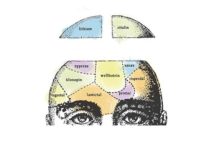Worldwide, depression remains one of the most widely diagnosed disorders, and the first line of treatment in many countries is antidepressant medications. While early reports showed promise, emerging evidence over the last several years has raised massive doubts. This evidence has questioned both the efficacy of these drugs and the adverse effects associated with them.
A 2019 review synthesizing the evidence on antidepressants was published in BMJ Evidence-Based Medicine. It was conducted by researchers Janus Jakobsen and Christian Gluud of Copenhagen University Hospital and Irving Kirsch of Harvard Medical School.
The researchers assert that while antidepressants show statistically significant differences when compared to placebo, the effect itself is so small as to be clinically meaningless. Given that the adverse effects of antidepressants are severe and pervasive, their use should be restricted until more is known about them.

Antidepressants, once hailed as the definitive treatment of depression, have suffered significant blows to their reputation. Recently, a change in the UK’s NICE (National Institute for Health and Care Excellence) guidelines, followed by the acknowledgment of their long-lasting harms by the former president of the Royal College of Psychiatrists, has brought their risks into sharp focus.
New reviews have noted that the withdrawal effects of antidepressants can last longer than a year. A recent study found that when ineffective antidepressants are augmented by antipsychotics, early death rates increase by 45%. Other researchers have pointed to rampant industry corruption in clinical trials of antidepressants.
In this evidence synthesis, the well-known researchers note that antidepressant use has increased exponentially across the world, and over 60% of the people taking them have been doing so for more than 2 years.
The researchers begin by reviewing what statistical significance means in antidepressant trials. Here they analyze the use of the popular Hamilton Depression Rating Scale (HDRS). In a clinical trial, whether a drug is effective or not for depression is often measured by the average drop points on this scale; it is supposed to represent a drop in the severity of depression symptoms.
The scale is mired in numerous controversies, however. Earlier a drop of 3 points on the scale was considered to be clinically significant; this was displayed on the NICE website but has since been removed because of numerous criticisms. Despite this, many studies still continue to use this benchmark to suggest that a drug is working. Some studies show that such a small change on the HDRS scale produces no change in the person’s condition and is undetectable in clinical practice. Others have argued that a change of 7 points is necessary for any clinical improvement to be identified.
Another problem is that trials often divide the 52-point scale into two binaries: people showing greater than 50 percent improvement on HDRS are called responders to drugs and those below that as non-responders. This is an arbitrary division obfuscating complex realities. For example, a person showing a 49% change is called a non-responder while 51% is considered to have responded to the drug. The mere difference of 2% puts them in completely different categories. At the same time, it puts people with a score of 0% change and 49% percent in the same category. The researchers write:
“Hence, when assessing such dichotomized outcomes, there is a considerable risk of overestimating benefit, but there is also a risk of not detecting a ‘true’ effect. Hence, dichotomized outcome results, such as ‘response’ or ‘remission’, should not be used to assess the statistical or clinical significance and should be interpreted with caution.”
The researchers note that several recent reviews of antidepressant studies have shown that the drugs have small statistically significant effects compared to placebo. At the same time, most of these reviews are non-systematic (according to the PRISMA checklist) and are thus considered less rigorous than systematic analyses. The researchers evaluate two recent reviews.
First, in 2017, the authors of this synthesis conducted a systematic review of the evidence for antidepressants. They found that while the difference between antidepressants and placebo was statistically significant, the effect size (1.94 HDRS points) was too low for clinical significance (3 HDRS which was the earlier NICE criteria) and far lower than “minimal improvement” (7 HDRS).
In other words, the magnitude of the difference between antidepressants and placebo was too small to matter. For long-term effects, the size was even smaller. Additionally, the measured adverse effects and chances of bias in many of these trials were both high.
The second review was published in The Lancet in 2018. It measured only short-term outcomes and similarly found statistically significant results for antidepressants, but also a really low effect size. Researchers report that only 18% of the trials in that review were at low risk for bias.
The researchers write that one of the major problems with the existing evidence, apart from the low effect sizes, is the high chance of bias in the trials. For example, the Lancet review also included head to head trials, which are especially vulnerable to industry sponsorship.
Moreover, we now know that patients can break blind in a trial because the adverse effects of antidepressants cue them to the fact that they are not receiving a placebo. Thus, even the small significant effect seen in the trails could be a result of an enhanced placebo effect. In other words, the participants break blind and begin to feel great about receiving the actual drug, which influences their depression rating. Lastly, many trial results cannot be easily generalized to the wider population as they include only a very specific type of patient.
For these reasons, even the small statistically significant effect might be inflated. For example, one study found that if the meta-analyses included an author working for the pharmaceutical company manufacturing the drug, it was 22-times less likely to “have negative statements about the drug than other meta-analyses.” It also found that trials at low-risk for profit-bias found no statistically significant effect for antidepressants.
While these results cast doubts on the efficacy of SSRIs, researchers of this review also note that both serious and non-serious adverse reactions have been downplayed. These range from sexual dysfunction and gastrointestinal problems to birth defects for SSRIs, and seizures, and even death for tricyclic antidepressants.
Withdrawal symptoms are also severe and long-lasting; these include hallucinations, stroke-like symptoms, panic disorder, rebound depression, and anxiety among many others. Some have insisted that this should be called antidepressant withdrawal rather than the more evasive discontinuation syndrome. Often, even when patients want to get off antidepressants, these symptoms make it difficult to stop. The authors write:
“Withdrawal symptoms might also explain why some studies have alleged to show that the risk of relapse seems to be reduced if antidepressants are continued instead of not continued. Withdrawal symptoms might be the reason why patients who do not continue antidepressants might do worse compared with patients who continue antidepressants.”
The researchers insist that given recent evidence, social determinants of health like unemployment and poverty should be addressed as causal factors in depression. Further, it appears that for many patients the priority is not simply a reduction in symptoms, but that they can join social activities and return to work. Given the low efficacy (clinically insignificant effect), risks of harm, and industry-bias, patients should be informed about other treatment options. The authors write:
“Antidepressants should not be used for adults with major depressive disorder before valid evidence has shown that the potential beneficial effects outweigh the harmful effects.”
****
Jakobsen, J.C., Gluud, C., & Kirsch, I. (2019). Should Antidepressants be used for Major Depressive Disorder? BMJ Evidence-Based Medicine, 25(4), 130-136. http://dx.doi.org/10.1136/bmjebm-2019-111238 (Link)














Withdrawal is also a factor in almost all studies. The study design is to take people with depression and withdrawal them from their current drugs. During this withdrawal period they test the new drug vrs no drugs. Since most drugs used for depression increase serotonin, even before SRI’s all these studies have a placebo where some of the people are going through withdrawal. You can see this in the data with the drug benefit occurring mostly at the start of the short term study.
2 points on the HDRS scale is equivalent to someone no longer losing weight. Meaning the drug is claimed to work because one of its effects is obesity. A person also receives a 2 point improvement if they no longer “deny” that they are mentally defective and ill.
Does anyone really think obesity means depression is better? Does anyone really thing someone saying they are mentally defective means their depression is better?
Report comment
Not to mention that “data” means nothing when the whole concept was garbage from the get go.
So we are always having to pick it apart, when the picking apart is not making a dent on stupefied
brains indoctrinated to the point of acting like robots.
Report comment
It’s going to take a while until this becomes mainstream with all the financial and power interests in keeping the status quo.
Report comment
It is already mainstream. You live in a world where people have erected walls of bullshit all around them. This is just one of them. 9 out of 10 people know, drugs don’t treat mental illness. People just get used to living lies and lives of lies and lies around their lives and lives that are a lie.
The important question is: are you NORMAL? Do you trust AUTHORITY? Are you willing to let your life be destroyed by tearing down the walls of bullshit around you? E.G. always speak the truth, say what you mean, etc. even if it gets you fired, “disowned” by family, whatever?
Report comment
Man, this just keeps going on and on. 25, 18, 12, 9, 5 years ago, something in the news or popping up for its cycle about AD’s no better than placebo or shouldn’t be used or whatever. Meanwhile, round and round we go.
Face it, the use of psychotropic drugs in the first place was a no-no, so there was all this bullshitting that made it possible.
Now it’s torn down. So doctors need to just seriously start using common sense. Try opioids, shrooms, drugs that actually get people “high”, then when they need more or something better, give them that, and on and on. If drugs are the route they want to go, then just do it right, and with the safety of purity and dosage standards. Meanwhile, we could be living in a much more chill society, instead of one that’s on the verge of a civil war. And in the process, we’ll be doing away with these brain damaging neurotransmitter antagonists that the bullshitters used for their cover-up in place of real drugs that have more generalized effects on the brain and in most cases in which the brain evolved to respond to. Things will be sane.
Report comment
Would love to see a prescriber come on here to explain how “AD’s” work.
🙂
It would be so much more fun than reading “research” papers and “data”
Report comment
They could tell us how all the research and data is bogus lies from fraudsters trying to make money off books reporting the harm from drugs. They can explain how their feelings and opinions are science and we just need to pay them for another few sessions and for another round of addicting drugs and life will be grand.
Report comment
“Antidepressants should not be used for adults with major depressive disorder before valid evidence has shown that the potential beneficial effects outweigh the harmful effects.”
Shouldn’t this evidence have been shown prior to antidepressants being prescribed en mass to the population?
Report comment
Not according to the wonderful FDA.
Report comment
How could you expect antidepressants to work consistently if you know that “depression” is only a syndrome- a collection of signs and symptoms that could be the result of one or more of a number of conditions with different causes with differing proper treatments? Some of these conditions are even made worse by antidepressants, which will lead the “average” shrinks to look for plausible excuses to exonerate themselves from blame for prescribing a faulty treatment that led their depressed patients to become floridly psychotic.
Report comment
“Some of these conditions are even made worse by antidepressants, which will lead the ‘average’ shrinks to look for plausible excuses to exonerate themselves from blame for prescribing a faulty treatment that led their depressed patients to become floridly psychotic.”
But making a person “floridly psychotic” is what all the anticholinergic drugs (like the antidepressants, antipsychotics, et al) can do, via anticholinergic toxidrome. And all doctors, including the psychiatrists, were taught this in medical school.
The psychiatric industry literally took medically known ways to harm people, obfuscated them with their DSM, and turned them into a multibillion dollar way to systemically cover up easily recognized iatrogenesis – and mostly child abuse, according to the medical literature – for profit. All of which is illegal, immoral, and appalling.
Report comment
You’ve got to realize that, in the United States, psychiatry tends to be the specialty choice for those with the worst grades in their med school classes.
Report comment
A job sitting on one’s bum, after attending the college of lies, regurgitating. NO original thought and even fighting those shrinks who actually do have thought and are interested in doing much better. One would think that since shrinks can actually do their own thing, that many would join.
So it makes me think there really are not many who are capable of thinking further and are only capable of reading and regurgitating.
Report comment
smh I just can’t ever not be peeved by the fact we’re all still calling them antidepressants, antipsychotics, etc. PSYCHIATRY ITSELF should be so embarrassed at this point as to rush to renaming them correctly; dopamine antagonists, etc. I use the correct terms with nurses when I’ve wound up in the hospital over the years due to gastrointestinal issues and hernias and other issues including a recent car crash. I go out of my way to re-educate them on this even when the drugs are never mentioned or being used. I’ll just say; “You do know that reglan and compazine are neuroleptics, right? And that both are dopamine antagonists, like reserpine?” I swear to God. I’ve had to spend my life on disability for fucks sake, what excuse do these people have. They actually go to school to get a degree that culturally verifies that they have learned this shit. Meanwhile, when and where was it said that medical errors were the third leading cause of death in the united states? Did that ever turn out to be true? I imagine it’s #1 for sure, and that’s not counting adverse reactions, infections from surgeries, “side effects” from drugs, etc. I’m never more concerned for my health and safety than when I’m at a hospital. Be on alert for doctor dipshit and nurse know-nothing.
Report comment
They are embarrassed.
Report comment
Humility is exactly what they need. And it’s got me thinking about what was quoted in that Vice interview regarding another article, about how people who seek to find a middle ground aren’t being as reasonable as they think, as their were two sides to the argument regarding slavery in the U.S. as well, but that didn’t mean that the right thing to do was somewhere in between.
Realistically, we can’t build a new and better “mental healthcare”/social support system if we’ve got psychiatry hanging around, always claiming to be the experts they claim to be, and as a result, demanding to sit atop the hierarchy of it all. And let’s not forget, they’ve been draining nearly every drop of resources that’s been spent on “caring” for the “mentally ill” since their inception, along with the funding for an entire industry of “research” and the meaningless careers it supports.
And I don’t think it’s nearly as radical as it seems. I personally believe that psychiatry had much to do with bringing humanity out of the dark ages, but at the same time, that was then and this is now. They really, ultimately crossed the line when they started kidnapping or otherwise diagnosing and drugging kids.
Report comment
But really, it couldn’t be more obvious why they named them “Anti-depressants”
Doctor: “Alright, a clear case of depression. Now what was that class of drugs called that we weren’t supposed to use anymore?”
Assistant: “Antidepressants…”
Doctor: “Am I joke? Are people laughing at me??
…………….
Report comment
I use low dose ketamine as part of my modes of operation, and it has helped take me out of suicidal plotting. It is generic, affordable, and easy to use. It transcends the time consuming, expensive, and clinical over control of the nasal spray, IV, etc. It is not a psychedelic trip, which there is a place for, but I won’t go into these nuances here. I’ve been on over half a dozen other ‘antidepressants’. They’ve been placebo if not trivial, mediocre/insufficient, and often with adverse effects on them and coming off of them. Just wanted to mention this; ketamine used in this way is somewhat of an outlier. It also resonates with my interest in psychedelics, in this case, microdosing. Peace out.
Report comment